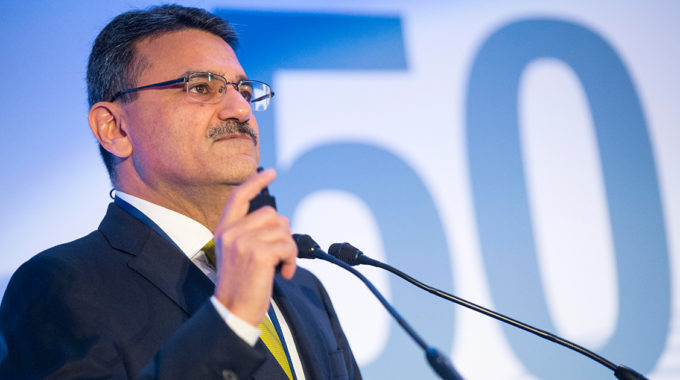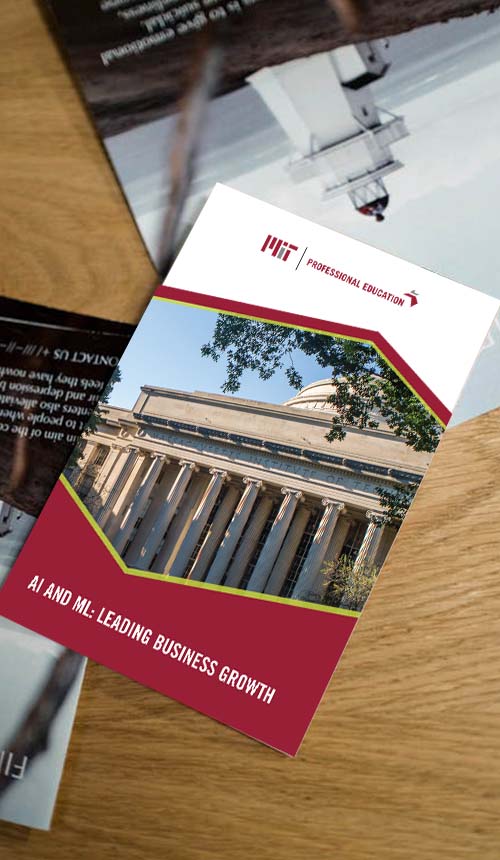
Shaping a High-Performance Work Culture and Building an Admired Brand
Mr. Manoj Kohli joined us to speak about the significance of a high-performance work culture and a high-performance people culture to building an admired brand and reputation.
Through his illustrious career, Mr. Kohli has mentored many who have become leaders themselves in different areas of expertise around the world. And from his experiences and expertise he shares with us, some invaluable insights. Here are some of the highlights.
Beginning with the expectations from CEOs, he explained that there are 3 key inputs that result in profitability for a company;
- A high-performance people culture
- An admired brand and a good reputation
- A business model and strategic direction that is profitable (Mr. Kohli covered this topic in a previous webinar)
A high-performance people culture
Consumer behavior is constantly changing. And it is happening at a faster rate now because of the pandemic. It must be realized that the consumer dictates the company strategy. Right now the consumer is loving technology. There is a shift towards digital platforms because of changes in the consumer’s environment. For example, the manufacturing industry is doing well because of the fall in gas prices.
He explained that the kind of companies that cause a disruption in the existing market are bold and courageous. They proactively adjust to the expected changes in the market and that’s why they become powerful. To become a company that is almost unstoppable in the market, the role of the CEO is extremely important. A CEO needs to guide the company and the stakeholders to achieve long term-success. And long-term success comes from internal success as well as external success. Internal success pertains to a high-performance people culture, while external success pertains to the brand and reputation. The two go hand in hand. Companies can convert uncertainty into certainty only with the help of good talent. And a high-performance people culture is the bedrock of that goal.
He then proceeded to explain who a high-performance employee is; someone who has a lot of passion and hunger for the growth of the company, a high quality of execution, and a high level of productivity and efficiency. And here’s where the role of the CEO comes in – to keep the team and talent engaged and provide the right environment so that they may achieve this high level of performance.
Corporate culture was very different many years ago. The key to change for growth was increasing one’s skills and competence. But today it is more of a mindset change. The requirement is to be more open and flexible to show real growth rather than to only amass skills and know-how. Companies need people who will own the change and the mission to evolve. He called them missionaries. The more missionaries, the better, as opposed to mercenaries.
Mr. Kohli went on to discuss the large number of young people entering the market. The younger generations have vastly different expectations from their jobs and that is something to consider as a CEO. While millennials are already a part of the workforce, Generation Z is just making an entrance. And there are some striking differences between the younger population and the previous generations. They do not look for jobs they can be attached to for 20-30 years like the previous generations. In fact, they are more focused on the next 3 years at a company. They gravitate towards work that gives them purpose in the world and also towards jobs that will allow them opportunities to always learn something new.
There has also been a significant shift in the diversity of a company, whether gender, age, or nationality, which is a hugely positive change. He said, diversity plus collaboration leads to a much higher degree of IQ and competence at a company, which then leads to better ideas and better solutions.
The CEO is responsible for encouraging that in a company. Just as they are responsible for the DNA of the company. For a company and its employees to be flexible and open to change, they themselves, as CEOs, need to be agile and flexible to change, evolution, and innovation. Change is and needs to be constant, but it doesn’t need to be perfect. Business models and strategy might need to be modified due to uncontrollable environmental changes. So, only a CEO who understands that can create an environment that encourages better performance through empowerment, recognizing good work, and celebrating small and big wins. And that’s how they will be able to take the company to greatness with a DNA that shows openness, humility, and agility.
Jumping back to the importance of understanding and working closely with young people, Mr. Kohli explained how CEOs need to be humble and authentic because the newest entrants into the workforce only appreciate those who are democratic and authentic. They don’t work well with people who are control-focused, rather they thrive with people who are always looking for a better way to achieve something and are courageous enough to let go of old mindsets and create a collaborative environment. Young people are attracted towards companies that are disruptors in the market because they recognize that the company allows for an environment of experimentation and creativity.
He concluded the section on a high-performance people culture by saying that the organizations of the future will thrive on change and a culture that encourages change, and technology, without discouraging mistakes. The culture a CEO brings to a company will be very different in the future. The biggest success of a leader is to build a high-performance culture because that is the foundation of a company.
An admired brand and a good reputation – how to build brand reputation
Of course, for this particular topic, Mr. Manoj Kohli drew from his own experience as CEO and joint MD of Bharti Airtel. The telecom company became the number one brand across categories in India; an outstanding achievement by the entire Airtel team, he insisted.
To become a brand of that caliber, the company needs to be able to distinguish itself from other brands and products in the market. That can only happen with regular innovation to deliver what is wanting in the market because the customer changes their expectations regularly. And every so often, the company needs to innovate the product and deliver yet another USP so that the company can create a premium around itself. To create a USP, a deep analysis of consumer behavior is important. Market research with personal dialogues with consumers by the leadership team will help with understanding the choices of the customer. When the company comes to understand that then sales will become superfluous, without the company having to hard-sell the product.
If a CEO and the company is able to read the customer well, then the brand will be relevant and the brand’s innovation will match what the customer wants. And that includes the right product, the right positioning, the right pricing, the right advertising, the right promotion, etc. Loosely quoting Will Rogers, Mr. Kohli drove home the point that, “You never get a second chance to make a first impression”.
How did Airtel achieve all that?
The company got down to the details and made it happen.
- They extended their coverage to 500 cities and 5 lakh villages and improved the quality of service immensely.
- The company made the product affordable while making sure they didn’t create a cheap product.
- They kept innovating and introduced 2-3 new features every year.
- The company focused on rural markets so intently that in some villages Airtel was the only brand.
- They took an effort of understanding the Indian middle class and their way of thinking, their way of buying, and their expectations.
- They also used nationalistic elements in the brand, ultimately making it a people favorite.
Airtel was also a big hit when it launched in Africa. And impressively it launched in 17 countries in Africa in one day! To tackle brands that had been there for 10-15 years, Airtel integrated itself in the market in many ways including by advertising in French, and adopting football as a brand element. They sponsored Arsenal F.C. and Manchester United F.C. and also had an Airtel trophy. This helped the brand make an impression on young people’s minds. Mr. Kohli ended by humbly explaining that while the service took time to improve and perfect, in just a few years the company became one among the top 2-3 brands in many countries in Africa.
Q&A session
After a quick recap of the points he made, insisting once more that a combination of all three aspects is what a company requires to succeed, Mr. Kohli answered some questions from the viewers. Below is the summary of the Q&A session that followed.
Q: Peter Drucker said, “Culture eats strategy for breakfast.” What are your thoughts on that?
A: Absolutely. I agree with this because strategy is easy, culture is difficult. But the strategy has to be right. With the right strategy in place, the execution of that strategy will come from culture. And if the culture of the company is not execution oriented and performance oriented then strategy has no value. Considering that, culture is a superior element in the equation.
Q: One of the important elements of culture is the aspect of psychological safety and trust. A culture that encourages people to take risks without having to look over their shoulder constantly. How can an environment like that be enabled in organizations where it doesn’t already exist?
A: You’re absolutely right. Trust and faith are very critical elements in culture. And without trust and faith, it is very difficult for the culture to prove to be growth oriented and collaborative. This has to start right at the top. The only way to achieve this is for the CEO and the leadership team to display trust and faith through their actions and behavior. I have always trusted people, till they break my trust. It is good to start with trust and empowerment, while supporting people in areas where they are weak.
Having said that, in large corporations it is very important that while there may be trust, it is still important to verify. This means that MIS and audits should continue, no matter how high the seniority. The process of approval is important for large scale companies.
I’d also like to add that, while processes are highly important, they should not be bureaucratic in times of emergency. For example, during the tsunami, the Andaman and Nicobar Islands network got completely washed away. And we got a message from the government that the network had to be up and running in 90 days. So we got everything moving; engineers and other teams went there immediately and new towers were transported. So during times like this, processes can’t be the end goal. The end goal needs to be the business and the customer. And while processes are important, they need to adjust to reality.
Q: We can love or hate politics but it is an occurrence at large corporations. But politics can also prevent great culture from taking roots. How can a situation like that be managed?
A: Again, this is something the CEO and leadership team have to manage carefully. Only they can kill it. And they must kill it because politics is detrimental to the future of a company. To do that they need to be alert and keep their eyes and ears open for it and identify how it is affecting the environment and the progress of the company. And once they know what it is, they need to immediately respond and kill it. That can only happen if they themselves are competent, transparent, unbiased, follow processes, and make decisions based on merit.
In a company that is riddled with politics, the onus is on the leadership and senior team. Either they are not able to identify politics or not able to stop it because of their own weaknesses.
Q: When the culture of an organization is taking shape, there is a tension between business and culture. For example, Mr. Phaneesh Murthy from Infosys was a fabulous business person, but things still did not turn out well. What are your insights on how to make culture explicit?
A: Yes, you’re right. Culture is written down on paper. But what is more important is the action taken by senior management. You can’t only write it down. Culture is real life and real decisions and real actions in real life.
There are few areas that are zero tolerance areas. Ethical behavior and respect are zero tolerance areas, including respect for women. In these areas the company can’t procrastinate. If action is not taken immediately then the company and leadership team are perceived as those who accept and allow that kind of behavior and weak culture. And this action needs to be showcased for the rest of the team to know so that employees are not confused about what the culture is. Rather, they are clear that behavior like that will not be tolerated.
Q: The importance of empathy as part of the culture of an organization has gained awareness in current times. Historically, top brands in India like Tata and Birla are known for being empathetic and caring towards their employees. But there is a limit when you put into perspective the business and maybe having to let people go. How do you make a decision like that with empathy considering it is always a tough one?
A: Empathy is the foundation of leadership. Times will always be hard, competition will always be cutthroat, and margins will always be under pressure. But that doesn’t mean you lose empathy. Everything that companies achieve is through people. If the management loses empathy then they lose everything. I don’t see a conflict of good business with empathy. If a company has to make a choice between letting 10% of the team go versus reducing salaries by 10%, a good decision is to reduce salaries by 10% for a brief time. Retaining the team is very important, especially retaining good talent. And that will not happen with just money, it will happen with a conducive culture and empathy. Even if you have to let go of someone, their exit should be respectful. The respect while they are leaving should be the same as the respect they received when they were brought into the team.
Q: If the culture is broken, what can middle management do to fix it if the chain of command is not looking in the right place, considering it could be a threat to the job?
A: It is tough for middle management. All you can do is maybe give regular feedback and do the right thing yourself. That’s all you can do because it is hard to confront top management. That’s why it is the responsibility of the senior management.
Q: Should a CEO follow their heart over their brain? What has been your experience?
A: Both are important. I have followed my brain for all professional decisions and my heart for all people-related decisions including consumers and employees. If a business decision has a people element then of course it is a matter of the heart. You can’t pick one or the other, both are important.
Q: How can an organization consciously plan to build a brand? For example, the Tata brand is synonymous with trust. Same with Birla in education, Maruti in automobiles, and Airtel in telecom. There’s an inherent trust factor. How do you put that brand DNA in place to begin with and how do you grow the brand accordingly?
A: You can’t separate a brand from the business. The brand is part of the business. I believe that the brand and reputation are built over decades. Even big reliable brands have problems, but they have gained trust as being reliable and durable and that’s why they can manage it. Good business comes from a good brand. This is because of a consistent high quality performance year after year. It is all linked.
Q: Steve Jobs famously said, “People don’t know what they want until you show it to them.” Apple started at the top and remained there. The Mahindra Group started off at a different place than where they are today. They kept upgrading their product but people still don’t consider them premium. How can a brand create a journey like Apple while starting out without resources? How can a brand be positioned as premium?
A: It is a lifelong journey to achieve that. You must always think fresh and deliver more. The brand journey is a marathon broken down into segments. You need to run fast and create something fresh. And then do that again and again. You have to keep improving. That is the brand. And that is also the biggest challenge for management. But to keep innovating, the culture needs to be encouraging and there needs to be an openness to think afresh and try different things.
Q: We live in an age of immediate feedback where customers can be very trigger-happy. How should a brand handle a bad situation?
A: You’re right about the social media pressure. But if the brand has a clearly cut-out journey by paying attention to customer behavior, then their path is clear. Everything else is noise and distraction. The leadership team has to be dedicated to create a great brand and great products. This is where internal processes have to be stronger than social media. Decisions have to be made based on the company’s own research, and not on social media.
Q: How can all this be incorporated into building personal brands especially in an influencer-driven world?
A: Professionals have to focus on character and contribution. Is their character honest, hardworking, and humble? Is their contribution high in terms of execution, delivery, and leadership? I have never worked for a self brand. I don’t think professionals need to do that. You may achieve it at some point but you can’t work for it. High team performance is important. The team brand and company brand is important.


















